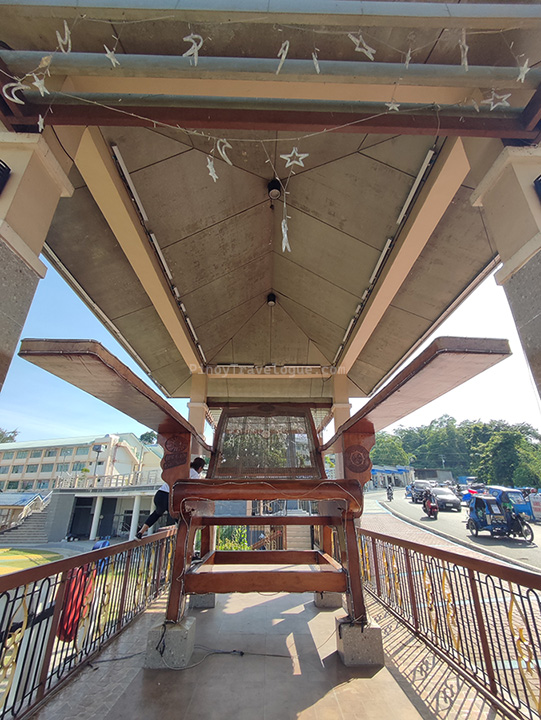 |
| Ilagan City's Giant Butaka |
On our way to the hotel the night we arrived in Ilagan City, capital of Isabela province, we caught a glimpse of this giant chair. It was illuminated with multi colors under a gazebo that stands within a small, triangular plaza located in the middle of a seemingly busy intersection. We went to Ilagan for the week-long coverage of its Mammangi Festival and 11th cityhood anniversary and among the spots we visited for a side trip was the city's Giant Butaka monument.
READ ALSO: Twice the Fun: Ilagan Celebrates Mammangi Festival 2023 and 11th Cityhood Anniversary
In 2003, Ilagan vied for a Guinness world record by commissioning around 50 local furniture makers to craft a massive butaka. The butaka (also, butaca) is a type of reclining chair with curved, woven backrest (for ventilation) and two long, multipurpose armrests, which were originally intended for the legs to rest on.
At first, it was said, that the locals thought of creating a huge rocking chair, but after considering butaka's historical significance to the city, they ended up with the traditional non-rocking armchair that Ilagueños have been producing centuries ago.
 |
| Giant butaka |
Ilagan's butaka industry predates the Spanish arrival in the Cagayan Valley region. History narrates that when the Spaniards came, they have seen butakas in the homes of affluent Ilagueños, which they eventually adopted and brought in to their mission houses and government halls.
Today, the butaka is a common piece of furnishing in every Ilagueño household that offers a respite from the day-to-day grind. This lounging chair is mostly manufactured and can be found sold at the roadside shops in Brgy. Alinguigan 2nd, the barrio regarded not only as Ilagan City's, but the entire Cagayan Valley region's center of furniture making. It was also from this barangay where the craftsmen who created the now 20-year-old gigantic butaka had come from.
 |
| The author beside the gigantic butaka chair | via instagram.com/pinoytravelogue |
The makers worked daily for exactly 29 days to produce the chair that measures 11.4 feet high, 20.8 feet long and 9.7 feet wide, using the same materials as in a normal size butaka—the durable narra wood and sturdy interlaced rattan.
The so-called "Butaka ni Goliath," which weighs 1000 kilograms, was unveiled to the public in May 2003—in time for the then municipality's 317th founding anniversary—at the Rizal Park located beside Saint Ferdinand Parish Church in the city's poblacion.
 |
| Bonifacio Park |
In the same year, it was transferred to where it is currently displayed, the smaller yet bustling Bonifacio Park situated amidst the intersection of roads that lead to Manila, downtown Ilagan and Cagayan province, surrounded by rows of commercial establishments.
More than a work-of-art that underscores the city's claim for the origin of butaka, Ilagan's colossal armchair was apparently intended to be a tourism centerpiece. Also located at the Bonifacio Park is the city's Tourist Information Center and a pasalubong store where miniature souvenir butakas and local kakanin such as binallay and inatata can be purchased.
READ ALSO: Ilagan Sanctuary: A Spiritual Getaway
Facing Andres Bonifacio's monument is the "I Love City of Ilagan" landmark that is such a magnet for a touristic photo op. The park also features a colorful dancing fountain, upon the raised platform beside the butaka gazebo, which conjures both locals and tourists at certain times in the evening.
 |
| Mini butaka |
 |
| Our group of visiting media at the Giant Butaka | via Teddy Pelaez |
The "biggest butaka chair in the world" reportedly cost the city about Php 150,000 during the time it was being built. Both big and small furniture entrepreneurs in Alinguigan and some of the local officials had chipped in to complete the project. The creation of the world-recognized Giant Butaka was an undertaking that "exemplifies the great things [that] we [Ilagueños] can achieve by working together," says the monument marker.


